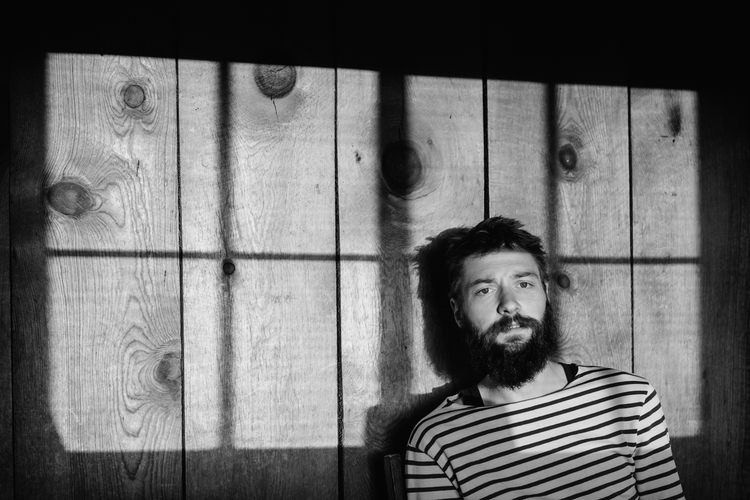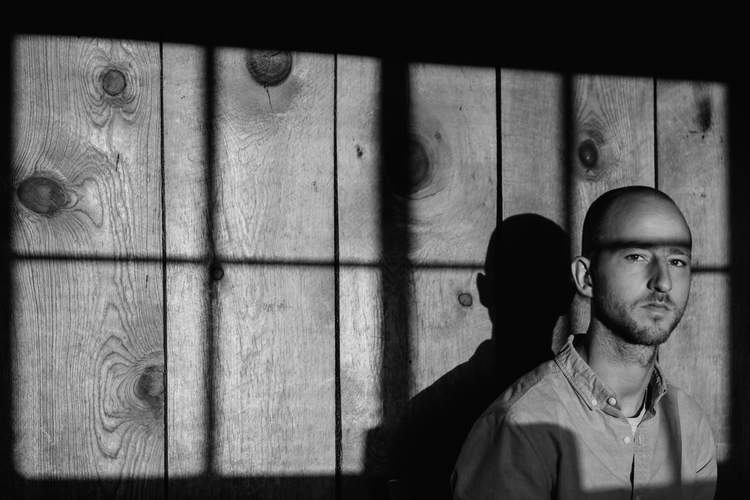Tuesday, September 24th
Land Art - Journal Entry No. 9
1:55 pm - Apache National Forest Campsite, New Mexico
Although I was visiting the Lightning Field with five other people, I still had an immense feeling of individual confinement. That’s in part due to the nature of this place, which is so vast and open that its bordering mountains appear to be miles and miles away. With such an endlessly seeming environment, venturing off could quickly and easily lead to a distanced isolation. With a desire to explore and gain a bit of privacy, I decided to do exactly that. Walking farther away from the little log cabin, feelings of solitude steadily increased. I initially approached the closest edifice- a tall, metal rod that glistened beautifully in the sunlight. At this time of day, the poles were barely visible unless you walked right up to them, which made it really difficult to deduce how many actually filled the space of this enormous field. The imminent lightning rod however, was close enough to entrance me in its shine. I found the relationship of the rod and its surroundings interesting: the sun seemed to have such a powerful effect on it. I continued walking around the field towards the next rod, suddenly paying more attention to the land I was walking on. It was dry, cracked dirt with bright yellow daisies sprouting from it. Its blossoming flowers suggested that this dead land could actually cultivate new life. Scanning the flowers, I discovered more activity- many bold-colored red and black beetles creeping through the dirt’s dark crevices. They popped against the ground like tear drops on a human face and were just as lively in their movements. I bent closer to the ground attempting to catch one with my fingers but, wanting nothing to do with me, the beetle quickly crawled away.
I can’t remember the last time I actually interacted with the earth in this way. Thinking about it now, it must’ve been during my childhood. Growing up, whenever my mother let my brothers and I roam around outdoors, we always felt empowered to unleash our imaginations and create our own adventures. Though, with age and progression into the internet era, I completely lost touch with that pastime. Favoring my childhood memories, I suddenly felt sorry for children growing up today who may never experience something like that. Today, they’d rather play on iPads and Game Boys than in grass and leaves. It’s unfortunate, because that restricts one of the greatest gifts we have as human beings: our imagination. This field would have been perfect to play in, and as I came to this realization, creativity came to me. As I continued to walk around the field, admiring the lustrous lightning rods, I had the sudden urge to sing out loud. Now, although I do appreciate theSound of Music, I’m not some nut who runs around open fields singing show tunes. However, this moment required immediate creative release, and so I quietly started to hum The Beatles’ “Here Comes the Sun.” It fit the exact mood this radiant setting exuded, and soon that hum transformed itself into words, those words sung over and over again in growing confidence. “Sun, sun, sun, here it comes.”
Finally exhausting my Paul McCartney impression, I walked back to the cabin to rejoin the rest of the group. I found that all the artists had smiles painted across their faces, very pleased with de Maria’s work. It seemed that in just a few hours, the Lightning Field had affected us all. Noting the sun’s decline, we decided it would be the best time to have dinner. Alex Getty kindly warmed up the prepared enchilada left in the home’s refrigerator. The rest of us set the table and took our seats for the evening’s meal. I felt comfortable in this company, as I think we all did. Sitting at a dinner table, sharing our thoughts, made it feel like we were a family regrouping after a full day of individual activities. Although we all had different experiences in this setting, we all had the same emotions for this piece. Just like the guest book in Dia’s office promised, the Lightning Field was amazing.
After dinner the group headed back outdoors to catch the sunset. The view was incredibly striking with burnt orange and bright purple clouds encompassing the field. Like the sky, the lightning rods were also radiant. In the middle of the day, you could barely see them, but during the sunset they were bold and prominent contrasting beautifully with the sky’s warm colors. Hundreds of lightning rods stood tall, glittering in the sun’s final rays. The scene’s overwhelming beauty hit us all. Now I understand how insignificant lightening really is to Walter de Maria’s Lightning Field. It is light that the piece’s remarkability depends on. Yet, Luke assured us that this field is just as beautiful when light is entirely absent from it.
We lit up the fire place in the living area, enjoying each other’s company over glasses of red wine. It was all so relaxing and I found it healthy to have a short break from the larger group. Being around that many people all the time is definitely something you need to get used to, and I’m not sure I am there yet. We all agreed that, unlike the other Land Art pieces we have visited, camping overnight here would not have had the same effect as it did with this small, secluded group. It wouldn’t have been as easy to appreciate isolation in the way that each of us had with more than 6 people around. The coziness of the house only added to the work’s enjoyability.
When the sun had completely set, Luke insisted that we turn off all of the lights in the house and go outside. We took the suggestion, and it turned out to be an excellent decision. In absolute darkness, the field felt more immense than ever. That was a result of the sky’s drastic transformation. Without the sun in the sky every single star was visible, even the Milky Way, which was the most prominent I had ever seen it in my life. I didn’t feel like I was on earth anymore, but instead a miniscule part of a massive, never ending galaxy. Millions of stars sparkled like diamonds in the midnight sky. It made me feel so small and insignificant. What’s one person out of 7 billion? What is one small planet in a solar system? What’s a solar system in a galaxy? Seeing a sky so large, filled with millions of stars like that makes you question the little things. What’s important in life? In the grand scheme of things, is it really worth it?
In the morning, most of us woke up early to catch the sunrise. As we expected, dawn had an altered effect on the grid of lightning rods. It was almost like an entirely different work of art at each position of the sun. When I last saw the lightning rods at sunset, they were bold and powerful, but at the break of dawn they seemed delicate against a light pink sky. It was so beautiful. Sadly, we only had a few remaining hours at the Lightning Field. Someone would be picking us up at exactly 11am to drive us back to Quemado.




As I waited for breakfast, I thought of de Maria’s piece and its artistic intention. Many with a basic knowledge of art would not be able to see how a field full of rods could be classified in that realm of creativity. However, art is subjective, and its meaning is far too convoluted to even bother to debate it, but I know you would have to definitely consider the Lightning Field in a certain way. If a piece can make you feel something or think in a different mindset, than it has served its purpose as a work of art. The Lightning Field has accomplished that; but going deeper the piece does have a very obvious medium. It’s not just the metal poles and how they’re strategically placed, but also how they interact with the land and sky that surround them. Those two other aspects of the Lightning Field are vital to the piece. These classic elements of life create the medium on which de Maria’s work is mounted on. They work together to create art impossible to accurately depict in a painting, photograph or any other creative interpretation. It’s a sculpture, an interactive installation, a painting, a photograph: it is all of those things. They just derive from each person’s individual understanding of the work, and that’s what makes it so powerful. No individual experience will be exactly the same.
In our final hours at the Lightning Field, we enjoyed a lovely breakfast of scrambled eggs, bacon, and fresh orange juice prepared by Sophia and Tomas. It was so nice to have this mini retreat and to feel close to people I barely knew. I didn’t really want to leave. After cleaning up, I decided to make my last venture into the Lightning Field. My emotions differed from yesterday and so the song that came to me this morning was Bill Withers’ “Ain’t No Sunshine When She’s Gone,” a sad goodbye to de Maria’s amazing piece. I sang it over and over again until I was called in to the house. It was time to go. As we packed the car, a few others were humming the song I sang on the Lightning Field. I guess I wasn’t as alone as I felt at the moment, but it was alright. I know, I know, I know I oughta leave this thing alone, but hey, ain’t no sunshine when she’s gone.
- - - - - - - - - - - - - - - - - -
Photography Credit: Alexander Getty
Alexander Getty is a San Francisco based photographer with an immense passion for what he does. Having started at a very young age, Getty honed his craft learning from mentors, family members, and professors in Rome, London, and New York. He began his career in New York where he attended the School of Visual Arts while balancing a job at Getty Images. Today Getty lives and works as a professional photographer in San Francisco, California. His work has been featured in galleries and publications internationally.
Originally published on Promote & Preserve.